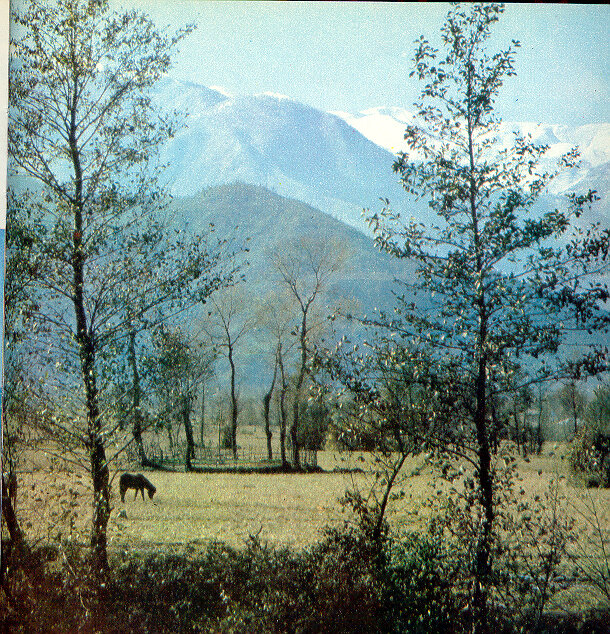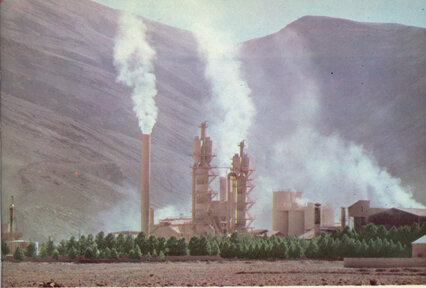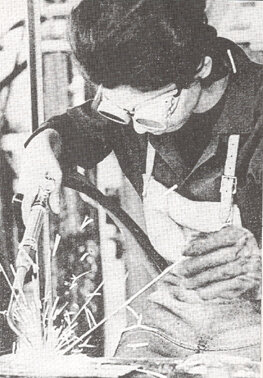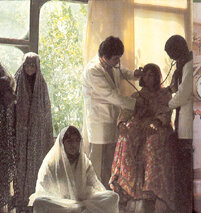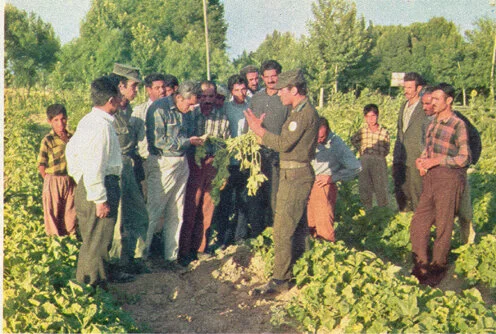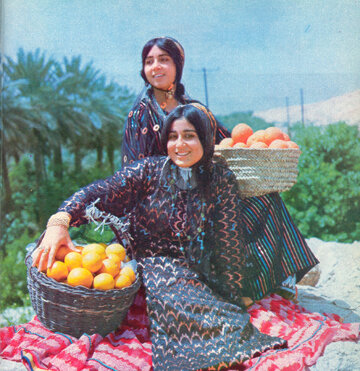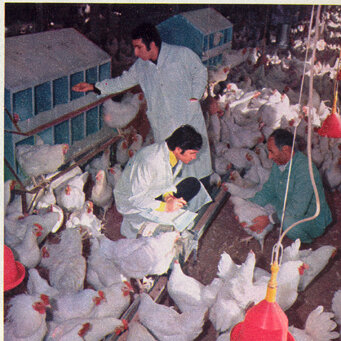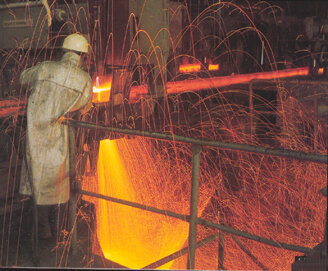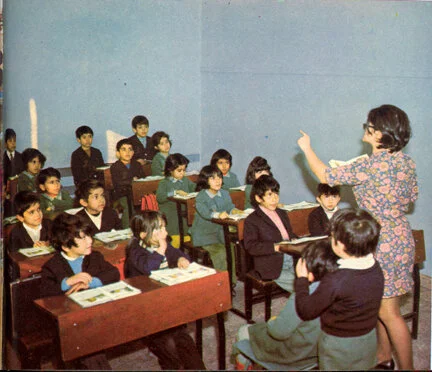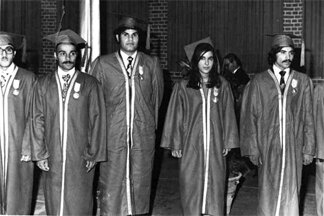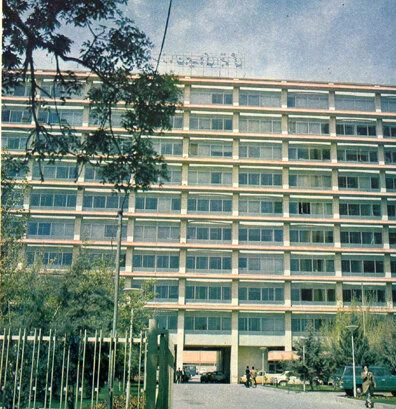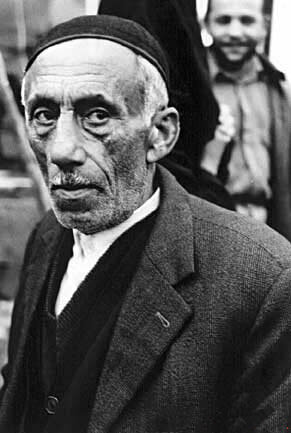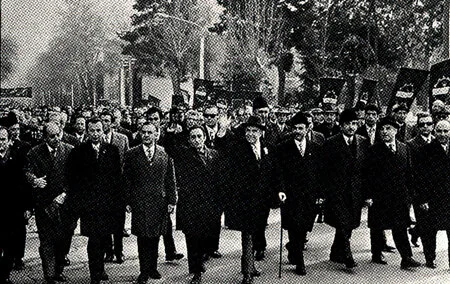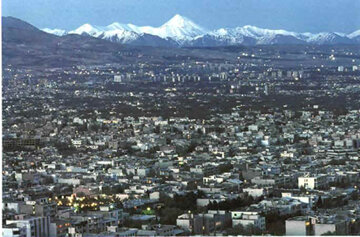
“By the nature of my responsibilities as the Shah and the oath I took to protect the rights and honor of the Iranian nation, I cannot remain a neutral onlooker in the struggle against the forces of evil. I have taken up the banner myself so that no power can reinstate the regime of slavery among the villagers and plunder the nation’s wealth for the benefit of a minority. I have decided as executive, legislative and judicial head of the state, to refer these reforms to referendum. Henceforth, no individual or group will be able to cancel, for the private interests, the results of this reform, which will free the farmer from the yoke of feudalism, ensure a brighter future, based on justice and progress for the noble working class and higher standard of living for honest and hard-working civil servants, members of the guilds and craftsmen...”
The “White Revolution” or the “Shah and People Revolution” was a series of peaceful, bloodless revolutionary changes in Iran that was launched in 1963 by His Imperial Majesty Mohammad Reza Shah Pahlavi and which was approved by 99.9% of the people of Iran in a national referendum in early 1963.
1- Introduced a radical Land Reforms program, designed to abolish Feudalism, where the government bought the land from the feudal lords at a fair price and sold it to the peasants at 30% below the market value, with the loan being payable over 25 years at very low interest rates. This made it possible for 1.5 million villagers, who had once been nothing more than slaves, to own the lands that they had been cultivating all their lives. Given that each one of these individuals had an average of 5 people in his or her family, it followed that the land reform program brought freedom to and touched and improved the lives of 9 million people, which was, at the time, nearly 40% of Iran's population.
2- Nationalized Forests and Pasturelands and introduced many measures, not only to protect the national resources and stop the destruction of forests and pasturelands, but also to further develop and cultivate the same. As a result thousands of centers were opened to sell fuel, kerosene, and petroleum to take the place of charcoal; more than 9 million tress were planted in 26 regions, creating 70,000 acres of "green belts" around cities and on the borders of the major highways; numerous national parks were created; 98,000 acres of new forests and 250,000 acres of various types of vegetation and trees were planted to limit the advance of the desert; various programs were undertaken developing the pastures further, digging wells and building troughs and shelter for the animals.

3- Privatized the government owned enterprises, manufacturing plants and factories, selling their shares to the public and the old feudal lords, thus creating a whole new class of factory owners who could now help to industrialize the country.
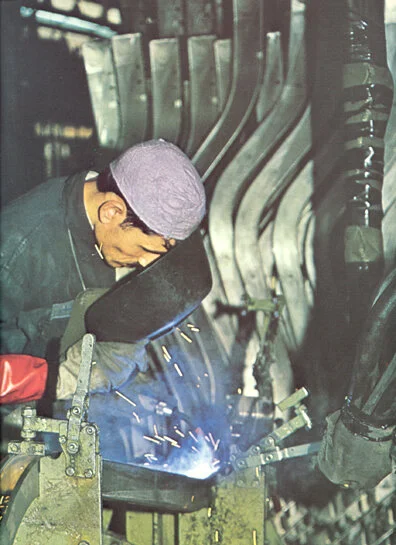
4- Introduced profit-sharing for industrial workers in private sector enterprises, giving the factory workers and employees 20% share of the net profits of the places where they worked and securing bonuses based on higher productivity or reductions in costs. From 1963 to 1975 the total sum of net profits paid to workers had multiplied by a factor of 128. In 1976 alone over 530,000 workers were paid benefits of about 12 billion rials, which was equivalent to one to two months' salary per person.

5- Amended the electoral law to give more representation, extending the right to vote to the women of Iran who, as a result, started to play an increasingly important role in their society. It did not take long before there were women serving their country as university professors, judges, deputies, senators and ministers in the cabinet. This was a tremendous achievement in a country where women were barred from voting, being left in the same category as criminals and those who were insane.
6- Founded the Literacy Corps so that those who had degrees and who were required to serve their country as soldiers could do so in fighting illiteracy in the villages and all the faraway places of Iran. Women volunteers serving in the Literacy Corps also played an important role in this fight against illiteracy. This scheme would help to eradicate illiteracy in a country where more than 2/3 of the population could not read or write.
7- Founded the Health Corps to extend public health and radical care throughout the villages and rural regions of Iran. In just over 3 years almost 4500 medical groups were trained; nearly 10 million cases were treated by the Corps; over 5.7 million people were vaccinated; over 280,000 people were referred to dentists; over 20,000 health education talks were given in which over 2 million people participated, and the list goes on.
8- Founded the Reconstruction and Development Corps to do a detail study of every one of the villages of Iran, to determine what was needed and to carry out necessary work to help in the development and the betterment of the villages. The primary responsibility of the Reconstruction and Development Corps was to teach the villagers the modern methods and techniques for farming and keeping livestock. It was as a direct result of this undertaking that, despite the severe drought of 1968 to 1971, agricultural production between 1964 and 1970 increased by 80% in tonnage and 67% in value.

9- Founded the Houses of Equity where 5 village elders would be elected by the villagers, for a period of 3 years, to act as arbitrators in order to help settle minor offences and disputes, thus avoiding the inconvenience and expense of having the cases tried in the faraway courts of the cities. By 1977 there were 10358 Houses of Equity serving over 10 million people living in over 19,000 villages across the country. In the first year of their founding over 18,000 cases had been successfully settled at these houses. By 1977 this number increased to over 3 million cases. The administration of justice by the Houses of Equity were so successful that in 1966 Arbitration Councils were formed to administer justice along the same lines and principles in the major cities of Iran. By the end of 1977 there were 283 Arbitration Councils promoting justice in 203 major cities, with a population of over 12 million people. In these Councils alone over 750,000 cases were settled to the satisfaction of all parties concerned.

10- Nationalized all water resources, undertook projects and introduced policies in order to conserve and benefit from Iran's limited water resources; catering to the needs of a rapidly rising population, a growing agriculture, and a developing industry requiring an increasing amount of electrical energy. Many dams were constructed and five more were under construction in 1978, which would make it possible for millions of acres of land to be cultivated in a country that didn't even have sufficient moisture and humus to sustain it through two successive years of drought. It was as a result of these measures that the area of land under irrigation increased from 2 million acres, in 1968, to 5.6 million in 1977, which, with all the other projects that were also under development, was estimated to increase to over 37 million acres in the near future. As for the contribution of the above undertakings and policies to industry, the production of electric energy rose from 2.3 billion KWH, in 1963, to more than 20 billion KWH in 1977, with the capacity of the electric plants rising from 850 MGW to more than 7,500 during the same period.
11- Promoted urban and rural Modernization and Reconstruction with the help of the Reconstruction and Development Corps. Apart from their success in improving agricultural yields, the Reconstruction and Development Corps were also responsible for building roads and waterways; building of public baths, schools and libraries; installing water pumps and power generators for running water and electricity; introducing post, telephone and telegraph to the villages; the founding of public institutions such as the rural corporations and so forth.
12- Introduced radical didactic reforms that improved the quality of education by diversifying the curriculum in order to adapt to the necessities of life in the modern world. Another major accomplishment was the introduction of administrative reforms and the founding of the councils that were assigned to each government ministry and which were charged with implementing reforms designed to promote administrative skills and methods that would modernize and simplify bureaucratic procedures.
13- Secured the workers' right to purchase shares in the industrial complexes where they worked by turning Industrial units, with 5 years history and over, into public companies, where up to 99% of the shares in the state-owned enterprises and 49% of the shares of the private companies would be offered for sale to the workers of the establishment at first and then to the general public. Within a year 153 industrial enterprises had sold their shares to over 163,000 workers and peasants and transactions were underway concerning 320 companies which were to sell shares estimated at 170 billion Rials. Where necessary, the purchase of shares was made possible by government loans, through the Council for the Expansion of the Ownership of the Units of Production.
14- In August of 1975, introduced measures to ensure price stabilization and campaigned against unreasonable profiteering- thus fighting against inflation and defending the rights of the consumer. Where major firms would not adhere to the price guidelines that were designed to control inflation, special tribunals were set up that went on to try over 8,000 people for price control violations. Owners of factories and large chain stores were heavily fined, with some being imprisoned and other's licenses being revoked. Sanctions were imposed on multi-national foreign companies and tons of merchandise stored for speculative purposes were confiscated and sold to consumers at fixed prices.
15- Free and compulsory education and a daily free meal for all children from kindergarten to eighth grade. Government sponsorship to ensure free education beyond elementary school, in all fields, in return for serving the public for a period equal to the time during which the student enjoyed government supported study. In 1978 7.4 million Iranians were enrolled in public schools alone. In that same year there were 185,000 students of both sexes studying in Iran's universities. In addition to the above there were over 100,000 students pursuing their studies abroad, of whom 50,000 were enrolled in colleges and universities in the United States. 18 universities and 137 colleges were built with the best of facilities, libraries and modern laboratories, all at the disposal of the increasing number of students that moved on to continue their studies in higher education. The majority of these students received not only government scholarships, but pocket money as well.
16- Introduced measures to provide for free food for needy mothers and for all newborn babies up to the age of two, and thus set the stage for broadly expanded social security and national health care system.
19- Introduced measures to fight against corruption within the bureaucracy. In November 7th, 1976, the Imperial Inspection Commission was founded, consisting of representatives from administrative bodies and people of proven integrity, whose function was to act as "the eyes and the ears of the King," studying the programs of ministries, monitoring their operations, correcting all organizational problems, and doing away with all the corruption that had become so endemic to Iran's bureaucracy. Laws were passed that required all government officials to disclose their net worth and prevented them from holding and managing stocks in the pursuit of personal gains and financial interests during the term of their office. Foreign companies were penalized for promoting corruption, dealing with unauthorized agents and for giving bribes. Even the royalty were not beyond the reach of the law. In 1978, a decree was issued regarding "the ethical conduct of the Imperial Family," whereby all complaints against the royalty could be referred to a special commission composed of three judges, chosen by the Minister of Justice. Of course that this commission did not preclude anyone from filing a complaint against the royalty in an ordinary court, which, together with other legal institutions, provided for recourse to justice for all and served as a pillar of Iran's social and moral order.
18- In 1977, introduced measures to to ensure a stable and reasonable cost of renting or buying of residential properties. Controls were placed on land prices and various forms of land speculation were penalized, while, at the same time, the government embarked on a program of low-cost public housing which were offered to prospective home or apartment buyers with low-cost, long-term government-guaranteed loans. By the end of 1977 some 31,000 government-sponsored housing units had been completed with another 40,000 units under construction.

























